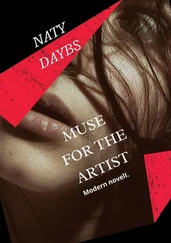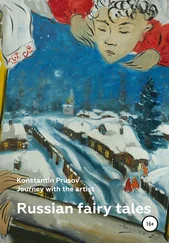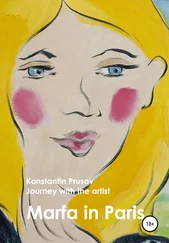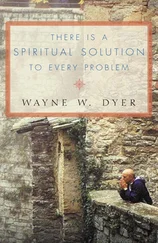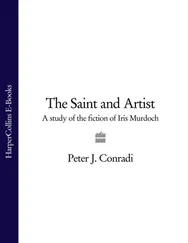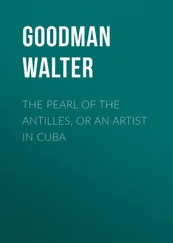Pavement Café illustrates a small corner of a large pedestrian piazza. I selected this area because the patterns of the shapes generated a lively composition, and my aim was to try to catch the essence of the subject with the minimum of detail.
Many of the problems that will confront you when painting can often be resolved by producing preliminary studies, either in monochrome or with limited colours, to help sort out doubts or uncertainties in the interpretation of your subjects. These can be small thumbnail sketches, or larger studies similar to Garden, Malcesine, Italy on page 8. This was produced using one warm and one cool colour to establish the distribution of tonal values, direction of lighting and colour temperature (the relative warm/cool colour relationships) within the proposed image.
Preliminary studies will also allow you to try out different colour combinations in which perhaps you wish to convey mood or atmosphere. In Winter Landscape the mood was achieved by using complementary colours, yellow and purple, which when mixed gave a range of neutral colours tending to grey in the middle. This gave an unusual colour cast to a wintry subject with the inclusion of a warm sky that, combined with using a middle range of tonal values (without the extremes of black and white) gave a more muted feeling to the painting in general.
Atmosphere is obtained principally by adjusting the quality of lighting in a painting. This can have the effect of reducing a subject to just a few simplified shapes. Paintings looking into the light, for example, will dramatically change the elements of a subject into a series of silhouettes.
So, wherever inspiration leads you, opportunities for subject matter exist all around you. All you have to do is to know how to look for them.
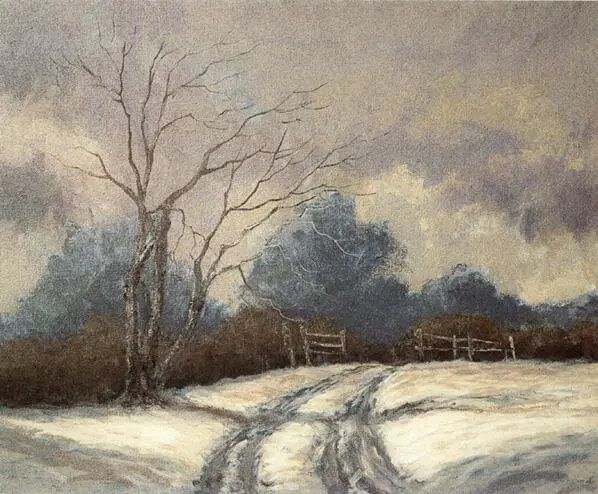
WINTER LANDSCAPE
acrylic, 51 × 61 cm (20 × 24 in)
Creating an atmosphere can transform seemingly uninteresting or commonplace landscape subjects. I based this studio painting on a small sketch that I made in the summer months. Closely related tones in combination with a restricted palette of yellow and purple gave a muted mood to the image.
2
CENTRE OF INTEREST
What is a focal point, and do I really need to worry about it unduly?
Answered by: Jackie Simmonds
Many wonderful pictures have been created by artists who have not bothered with a focal point; instead, these pictures tend to be about pattern and texture, a tapestry of shapes and colours. Nevertheless, I believe that a picture will always benefit from having one strong focal point – the centre of interest. A good way to think about a focal point is to create in your mind the picture of a stage full of dancers. The lights are set to wide beam, taking in the whole stage. Your eye darts from dancer to dancer, finding it difficult to concentrate on any one spot on the stage. Now imagine the lights dimming slightly, and a brilliant spotlight shooting out to illuminate one main dancer. Now you have no problem where to look: you are being directed to look in one spot, while your peripheral vision takes in the whole scene.
If you simply sit down to paint whatever is in front of you, without planning the composition, you run the risk of producing a weak picture, one without a sense of purpose. If the subject you select does not have an obvious focal point, you need to consider how to create one. A seascape, for instance, may have no obvious focal point – in fact, the sheer scale of an area of ocean makes it very difficult to focus on one spot – but for the picture to be interesting, the viewer’s eye needs to be held within the rectangle, focusing on one dominant area to begin with, before moving on to examine the rest of the image.
THE MOROCCAN DOORWAY
pastel on paper, 51 × 30 cm (20 × 12 in)
Here the viewer’s eye is directed to the doorway by the lines of the pathway. A little obvious, perhaps, but it works well! The doorway is positioned off-centre, and on the top right ‘eye’ of the rectangle. Notice, too, that the edges of the pathway, where they meet the edges of the rectangle, are asymmetrically placed. Positioning them at exactly the same point, to the left and to the right, would have been rather boring.
HOW TO SELECT A FOCAL POINT
Ask yourself when you sit down to paint what it was that first attracted you to the scene. It may help to write this down in your sketchbook. If you cannot answer this question immediately – it is possible that you just liked the whole view – ask yourself what you would best like to emphasize, or draw particular attention to. Sorting out your thoughts before you commit to paper is an important part of the process of painting. It does not mean that these ideas and thoughts are set in stone; you might decide to change the emphasis during the process of painting – but it certainly will help your confidence, and sense of direction, to have a good, positive starting point. Deciding on what is most important in your picture will give the picture meaning; your reason for choosing that particular scene will be clear to the viewer.
Divide the paper or canvas into thirds, vertically and horizontally. Where the lines cross, these are the ‘eyes’ of the rectangle, perfect spots on which to position a focal point or area. My diagram shows all four, but you would only use one, ideally, for your main focal point.
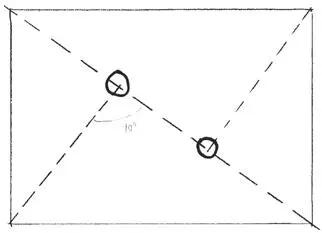
Divide the picture into two, from corner to corner. Then bring a line down from one of the other corners, to cross the first line at right angles. Where the lines cross, is the ‘eye’ of the rectangle, or focal area. In my diagram you can see two alternatives.
HOW TO POSITION YOUR FOCAL POINT
You should always aim to direct the viewer’s eye into and around the picture. Therefore, the placing of the main elements of the picture is crucial. Artists through the centuries have used the ‘golden section’ – a way of dividing the rectangle that is somewhat complicated, but worth exploring (see Bernard Dunstan’s book Composing your Paintings published by Studio Vista). A simpler way is to divide your rectangle as in either of the diagrams above. Placing the focal point onto one of the ‘eyes’ will be both successful and comfortable.
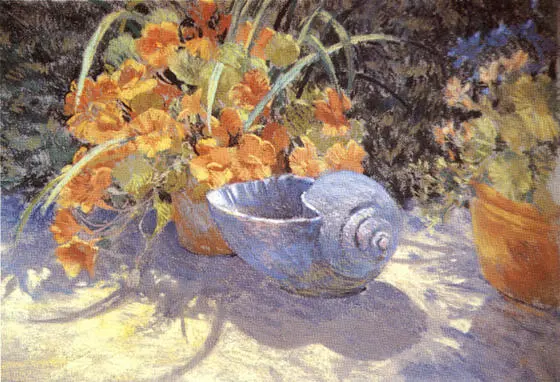
L’ESCARGOT
pastel on paper, 41 × 51 cm (16 × 20 in)
Although the shell looks fairly central, in fact I placed it carefully within the rectangle so that its sharply sunlit right-hand edge, and its shadow, were positioned in the lower right focal area of the rectangle. The flowers, in reality, were a different colour – I chose to use orange, the complementary colour to the blue-greys of the iron shell.
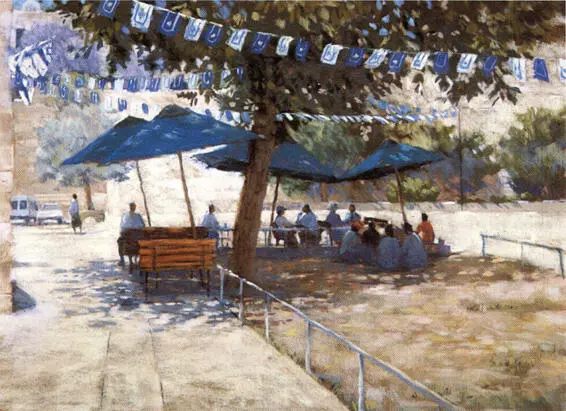
THE HURVA SQUARE CAFÉ, JERUSALEM
pastel on paper, 51 × 61 cm (20 × 24 in)
This was a difficult composition, since the café seats stretched across the scene, but I decided on a dominant focal area of the bench, table, silhouetted figures and two umbrellas on the left. The umbrellas are sharply defined by the light area behind. The lines of paving, and the tree trunk, lead to the focal point, about one third into the picture.
Читать дальше








